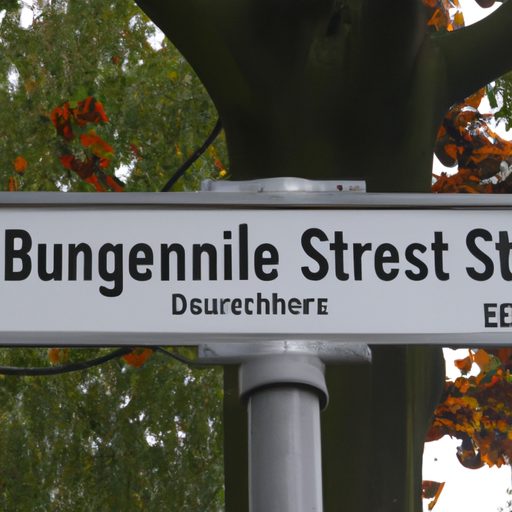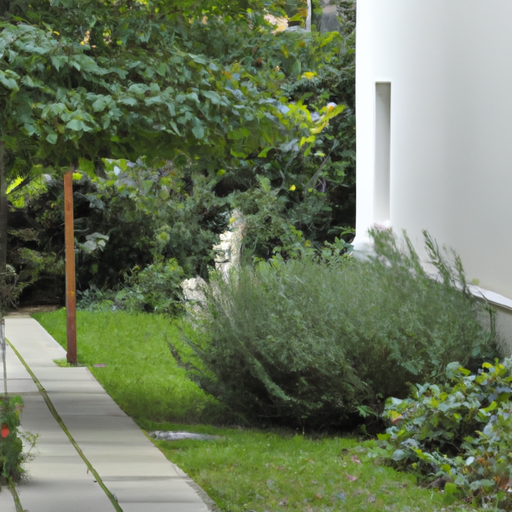The Hidden History of Berlin’s Iconic Park Statues
Oh, Berlin, you magnificent beast! A city that’s been through it all—wars, walls, techno revolutions, and falafel-induced food comas. But there’s one thing that stands (quite literally) tall and proud amidst the ever-changing landscape: the park statues. They’re the stoic, silent observers of our beloved capital’s past and present, and boy, do they have stories to tell. So, grab your Club Mate, don your most ironic T-shirt, and let’s dive headfirst into the hidden history of Berlin’s iconic park statues.
First things first, let’s talk about the granddaddy of them all – the Victory Column. This 67-meter-tall monument isn’t just a golden goddess, she’s also a symbol of the city’s resilience. Built to commemorate the Prussian victory in the Danish-Prussian War, the Victory Column has survived not one, but two world wars, and has even been moved to its current location in Tiergarten to escape those pesky Soviets. Talk about a survivor! But, did you know that there’s a secret staircase inside? That’s right, folks! You can actually climb to the top and gaze upon the city like a true Berliner—just be prepared to get those thighs burning with all 285 steps.
Now, let us journey into the heart of Kreuzberg, where you’ll find the enchanting Görlitzer Park. But forget about the drug dealers and slackliners for a moment, and focus on the park’s most famous resident: the Görlitzer Mermaid. This lovely lady was a gift from our Polish neighbors in the ’90s, and she’s been charming the pants off Berliners ever since. If you’re lucky, you might even catch a glimpse of her brushing her hair with a fork, just like her more famous cousin, Ariel. And if you’re really lucky, you might just hear her sing a haunting melody that sounds suspiciously like “Ich bin ein Berliner.”
Speaking of singing, have you ever heard the tale of the Singing Fountain in Volkspark Friedrichshain? Legend has it that this whimsical water feature was once the site of an epic battle between a group of feisty nightingales and a gang of unruly sparrows. The nightingales won, of course, and now their melodies can be heard echoing through the park on warm summer evenings. If you listen closely, you might even hear them singing the praises of their favorite statue—the Märchenbrunnen, or Fairy Tale Fountain. This magical masterpiece boasts over 100 figures from Grimm’s fairy tales, and it’s the perfect spot to spark some childhood nostalgia while sipping on a Späti-bought beer.
But not all of Berlin’s park statues are quite so whimsical. Take, for example, the Molecule Man. This massive, 30-meter-tall aluminum sculpture looms large over the Spree River, where Kreuzberg and Treptow come together in a beautiful, hipsteriffic union. The Molecule Man is said to represent the intersection of three districts and the unity of all people, which is pretty deep for a bunch of molecules. But did you know that he’s also a big fan of techno? That’s right, if you squint your eyes and tilt your head just right, you can actually see him fist-pumping along to the beat of an invisible Berghain sound system.
Now, let’s mosey on over to the Spandau Citadel, where you’ll find the legendary statue of Albrecht the Bear. This 12th-century ruler is often credited with founding Berlin, and his statue has become a symbol of the city’s enduring spirit. But what most people don’t know is that Albrecht was actually a bit of a prankster in his day. Rumor has it that he once replaced the wine at a royal banquet with sauerkraut juice, causing all of the guests to pucker up in disgust. So, the next time you pass by his statue, give him a knowing wink and a nod, and maybe even share a secret chuckle at the thought of medieval Berliners sipping on fermented cabbage juice.
And finally, we arrive at the pièce de résistance of Berlin’s park statues: the Buddy Bears. These colorful, life-sized bear sculptures can be found scattered throughout the city, each one representing a different country and painted with vibrant, eye-catching designs. They’re the ultimate symbol of Berlin’s multiculturalism, and they’re also pretty darn huggable.
But it turns out that these bears aren’t just cute and cuddly; they’re also party animals! There’s a little-known legend that says that on the night of the summer solstice, all of the Buddy Bears come to life and gather together for an epic, all-night rager in Mauerpark. They dance, they sing, they drink Club Mate and eat currywurst until the sun comes up, and then they return to their posts, just in time for the morning’s tourists to snap selfies with them, none the wiser.
So there you have it—a whirlwind tour of the hidden history of Berlin’s iconic park statues. From the Victory Column to the Buddy Bears, these stone-faced sentinels have seen it all, and they’ve got the dirt (and pigeon droppings) to prove it. But the next time you stroll through one of Berlin’s many parks, don’t forget to stop and take a moment to appreciate the stories behind these silent witnesses to history. And who knows? Maybe you’ll even discover a hidden gem of your own, just waiting to be unearthed among the graffiti and kebab shops of this endlessly fascinating city.
Helpful Q&A:
Q: What is the origin of Berlin’s iconic park statues?
A: The origin of Berlin’s iconic park statues dates back to the 18th and 19th centuries, when the city was rapidly evolving into a major European capital. Many of these statues were commissioned by Prussian kings and other nobility to decorate their gardens, parks, and palaces. The creation of these statues was influenced by various artistic styles, such as Baroque, Neoclassicism, and Romanticism, and they often depicted famous figures from mythology, history, and literature. Some of the most notable sculptors involved in their creation were Andreas Schlüter, Christian Daniel Rauch, and Johann Gottfried Schadow.
Q: What is the significance of the statues in Berlin’s parks?
A: The statues in Berlin’s parks play a significant role in the city’s cultural and historical landscape. They serve as a testament to the artistic prowess of the sculptors who created them, as well as the patrons who commissioned them. Moreover, these statues represent a connection between the past and the present, as they have witnessed the many changes that Berlin has undergone over the centuries. They also contribute to the city’s unique charm and character, making them important landmarks for both locals and tourists.
Q: Can you mention some of the most famous park statues in Berlin and their stories?
A: Of course! Some of the most famous park statues in Berlin include:
1. The Märchenbrunnen (Fairy Tale Fountain) in Volkspark Friedrichshain: Designed by Ludwig Hoffmann in 1913, this intricate fountain features sculptures of characters from beloved Grimm Brothers’ fairy tales, including Cinderella, Snow White, and Hansel and Gretel. The fountain was a gift to the children of Berlin and represents the importance of storytelling in German culture.
2. The Siegesallee (Victory Avenue) statues in Tiergarten: Commissioned by Kaiser Wilhelm II in the late 19th century, this collection of 32 statues features Prussian kings, queens, and other notable figures. Each statue is accompanied by two smaller busts of individuals who played a significant role in the subject’s life or reign. The Siegesallee has been a subject of controversy due to its association with German nationalism but remains an important part of Berlin’s history.
3. The Schiller Monument in Gendarmenmarkt: Created by Reinhold Begas in 1871, this impressive statue commemorates the life and works of German playwright and poet Friedrich Schiller. The monument shows a larger-than-life Schiller surrounded by allegorical figures representing various aspects of his work, such as history, philosophy, and drama.
Q: What is the current condition of these statues and are there any preservation efforts in place?
A: The condition of Berlin’s park statues varies, with some having been meticulously maintained, while others have suffered from the effects of time, weather, and vandalism. In recent years, there has been a growing awareness of the importance of preserving these cultural treasures, and various efforts have been made to restore and protect them. Organizations such as the Stiftung Denkmalschutz Berlin (Berlin Monument Conservation Foundation) and private donors have contributed to the restoration and maintenance of these statues. Additionally, local government authorities have implemented measures to prevent vandalism and theft, such as increased surveillance and public awareness campaigns.
Q: Are there any interesting anecdotes or lesser-known facts about these statues?
A: Absolutely! Here are a few lesser-known facts and anecdotes about Berlin’s park statues:
1. The statues in the Siegesallee were mockingly referred to as “Puppenallee” (Doll’s Avenue) by Berliners, who often criticized the project as an expensive vanity project of Kaiser Wilhelm II.
2. During World War II, many of the statues were buried or hidden to protect them from air raids and potential confiscation by invading forces. Some statues were only rediscovered and restored decades later.
3. The bronze statue of the Greek goddess Victoria, which crowns the Victory Column in Tiergarten, is nicknamed “Goldelse” by Berliners due to its golden color. The statue weighs over 35 tons and was originally intended for a different location but was moved to its current spot at the behest of the Third Reich.
4. The “Allegory of Night” statue, part of the Märchenbrunnen ensemble, was stolen in 1988 and replaced with a replica. The original statue was eventually discovered in the possession of a private collector and was returned to its rightful place in 2005.



“Who knew those statues were more than just fancy pigeon perches? I guess they’ve seen more Berlin drama than a soap opera at this point! 😂🕊️ #StatueStories”